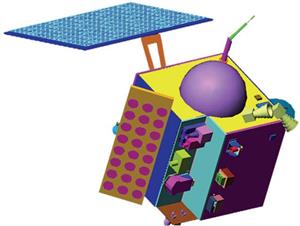
PUMPA - SMART LEARNING
எங்கள் ஆசிரியர்களுடன் 1-ஆன்-1 ஆலோசனை நேரத்தைப் பெறுங்கள். டாப்பர் ஆவதற்கு நாங்கள் பயிற்சி அளிப்போம்
Book Free DemoOn \(October\ 22,\ 2008\), India launched the moon vehicle, Chandrayaan-1 satellite, to investigate the Moon. The satellite was launched using Polar Satellite Launch Vehicle (PSLV) rocket from the Sathish Dhawan Space Center in Sriharikota, Andhra Pradesh. On \(November\ 8,\ 2008\), Chandrayaan-1 was launched into lunar orbit.

Chandrayaan-1
Chandrayaan-1 spacecraft that circled around the Moon at the height of \(100\ kilometres\) gathered knowledge on the moon's chemical, mineralogical, and geological properties. This mission provided a significant boost to India's space programmes, allowing it to develop its own technologies for lunar exploration. Chandrayaan-1 was in orbit for \(312\) days and successfully met \(95%\) of its objectives.
On \(August 28,\ 2009\), the scientists lost contact with the spacecraft. The mission came to an end when all of its objectives were completed successfully.
Objectives of Chandrayaan-1:
The mission's goals for Chandrayaan-1 were as follows:• To check and detect the presence of water on the moon.
• To locate the elements of matter.
• To look for evidence of helium-3.
• To build moon's three-dimensional atlas.
• To learn about the solar system's evolution.
Achievements of Chandrayaan-1:
The accomplishments of the Chandrayaan-1 project are listed below.• Existence of water molecules in lunar soil was discovered.
• The spacecraft verified that the moon was once fully molten.
• Photographs of the landing site of the US spacecraft Apollo-15 and Apollo-11 have been captured.
• The X-ray camera detected the presence of aluminium, magnesium, and silicon on the moon's surface. The satellite also provided high-resolution spectral data on the moon's mineralogy.
• The Chandrayaan-1 camera has transmitted over \(40,000\) pictures in \(75\) days.
• Photographs of peaks and craters obtained by the satellite indicate that the moon is largely made up of craters.
Reference:
https://www.isro.gov.in/pslv-c11-chandrayaan-1/pslv-c11-chandrayaan-1-gallery